I think that you should get the data types from the SQL server table first to create the recordset, rather than letting Excel decide the datatypes from the Sheet. I believe Excel decides the data types by the first row, so in your case, it assumed Funded data was an integer, then casts any following strings into that data type.
Here is a full function that I use
This code is modified by me from the original source, which is mentioned in the comment. I made changes to deal with errors better.
Function ExportRangeToSQL(ByVal sourcerange As Range, _
ByVal conString As String, ByVal table As String, _
Optional ByVal beforeSQL = "", Optional ByVal afterSQL As String) As String
'https://www.excel-sql-server.com/excel-sql-server-import-export-using-vba.htm
' Object type and CreateObject function are used instead of ADODB.Connection,
' ADODB.Command for late binding without reference to
' Microsoft ActiveX Data Objects 2.x Library
' ADO API Reference
' https://msdn.microsoft.com/en-us/library/ms678086(v=VS.85).aspx
' Dim con As ADODB.Connection
On Error GoTo Finalise ' throw friendly user connection error
Dim con As Object
Set con = CreateObject("ADODB.Connection")
con.ConnectionString = conString
con.Open
Dim cmd As Object
Set cmd = CreateObject("ADODB.Command")
' BeginTrans, CommitTrans, and RollbackTrans Methods (ADO)
' http://msdn.microsoft.com/en-us/library/ms680895(v=vs.85).aspx
Dim level As Long
level = con.BeginTrans
cmd.CommandType = 1 ' adCmdText
If beforeSQL > "" Then
cmd.CommandText = beforeSQL
cmd.ActiveConnection = con
cmd.Execute
End If
' Dim rst As ADODB.Recordset
Dim rst As Object
Set rst = CreateObject("ADODB.Recordset")
With rst
Set .ActiveConnection = con
.Source = "SELECT * FROM " & table
.CursorLocation = 3 ' adUseClient
.LockType = 4 ' adLockBatchOptimistic
.CursorType = 0 ' adOpenForwardOnly
.Open
' Column mappings
Dim tableFields(100) As Integer
Dim rangeFields(100) As Integer
Dim exportFieldsCount As Integer
exportFieldsCount = 0
Dim col As Integer
Dim index As Variant
For col = 0 To .Fields.Count - 1
index = 0
index = Application.Match(.Fields(col).Name, sourcerange.Rows(1), 0)
If Not IsError(index) Then
If index > 0 Then
exportFieldsCount = exportFieldsCount + 1
tableFields(exportFieldsCount) = col
rangeFields(exportFieldsCount) = index
End If
End If
Next
If exportFieldsCount = 0 Then
Err.Raise 513, , "Column mapping mismatch between source and destination tables"
End If
' Fast read of Excel range values to an array
' for further fast work with the array
Dim arr As Variant
arr = sourcerange.Value
' The range data transfer to the Recordset
Dim row As Long
Dim rowCount As Long
rowCount = UBound(arr, 1)
Dim val As Variant
For row = 2 To rowCount
.AddNew
For col = 1 To exportFieldsCount
val = arr(row, rangeFields(col))
If IsEmpty(val) Then
Else
.Fields(tableFields(col)) = val
End If
Next
Next
.UpdateBatch
End With
rst.Close
Set rst = Nothing
If afterSQL > "" Then
cmd.CommandText = afterSQL
cmd.ActiveConnection = con
cmd.Execute
End If
Finalise:
If con.State <> 0 Then
con.CommitTrans
con.Close
End If
Set cmd = Nothing
Set con = Nothing
' Raise appropriate custom errors
Select Case Err.Number
Case -2147217843
Err.Raise 513, , "Issue connecting to SQL server database - please check login credentials"
Case -2147467259
If InStr(1, Err.Description, "Server does not exist") <> 0 Then
Err.Raise 513, , "Could not connect to SQL server, please check you are connected to the local network (in the office or on VPN)"
Else
Err.Raise 513, , "Issue connecting to SQL server database" & vbNewLine & Err.Description
End If
Case -2147217900
If InStr(1, Err.Description, "'PK_XL_Eng_Projects_QuoteRef'") <> 0 Then
Err.Raise 513, , "Quote already uploaded for this QuoteRef and Upload Time, please wait a minute before trying again" & vbNewLine & vbNewLine & Err.Description
Else
Err.Raise Err.Number, , Err.Description
End If
Case 0
' do nothing no error
Case Else
' re raise standard error
Err.Raise Err.Number, , Err.Description
End Select
End Function

